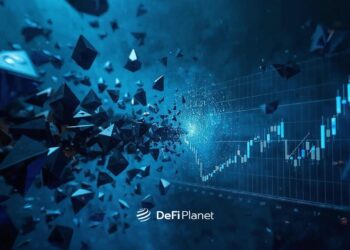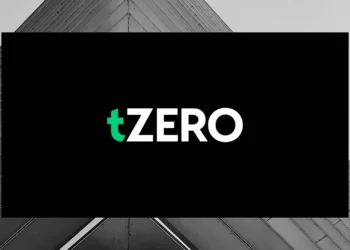Blockchain oracle network Chainlink recorded the most developer activity among ERC-20 token projects in September 2024. According to analytics firm Santiment, the project had over 400 GitHub events. Meanwhile, Ethereum, the pioneer in smart contracts and decentralized applications, was ranked third on the same metric.

Notably, the project has been rapidly ascending on that list since the beginning of the year. In June, it shot up from fourth on that list to second. This uptick in development signifies an active and engaged community. How did it get to that point? What were the factors responsible for this? These are the questions we try to answer in this analytical piece.
What’s Driving Chainlink’s Surge in Developer Activity?
Chainlink’s recent surge in developer engagement can be attributed to three key factors:
Its New Cross-Chain Interoperability Protocol (CCIP)
Introduced in early 2024, Chainlink’s CCIP has become the go-to solution for developers needing cross-chain functionality. The protocol went live on Metis, an Ethereum Layer 2 network, becoming the primary infrastructure for cross-chain applications. CCIP allows developers to unlock new use cases and improve liquidity, driving innovation in the decentralized finance (DeFi) space. This widespread adoption is evident in the over 1,100 developers who built and tested applications across networks in the first quarter of 2024.

IMG TXT: CCIP’s Risk Management Network. Source: Chainlink
Developer Bootcamps and Hackathons
The blockchain oracle developer, Chainlink Labs has also capitalized on the global appeal of hackathons to foster innovation. A standout event was the Chainlink Block Magic Hackathon, which drew nearly 400 project submissions, spanning fields like AI, consumer apps, gaming, and finance. The firm also held a 10-day bootcamp available in multiple languages—English, Spanish, Portuguese, Chinese, and Turkish—making valuable training easily accessible for developers.

The Chainlink team actively participated in various Web3 events and developer conferences, such as ETHGlobal Sydney, ETHBelgrade, GMVietnam, ETHDubai, and ETHBerlin, further strengthening their presence in the developer community. Notably, it launched Faucets 2.0, which made acquiring testnet funds easy with a user-friendly interface and a wider variety of options, at EthCC event earlier in the year.
Strategic Partnerships
Chainlink has secured high-profile partnerships with key players in the crypto space. In August alone, the platform partnered with Sony Block Solutions Labs to launch Soneium, an Ethereum Layer 2 solution, and integrated with other Layer 2 platforms like Base and Metis. These collaborations make Chainlink’s services—like its Verifiable Random Function (VRF) and Data Streams—accessible to a wider range of developers, further boosting the platform’s prominence.
Implications for the ERC-20 Ecosystem
Chainlink’s dominance in developer activity has significant implications for the broader ERC-20 ecosystem. When developers continuously work on a platform, it not only accelerates technological advancements but also increases the likelihood of discovering new use cases. For the ERC-20 ecosystem, this means that Chainlink’s high development activity could lead to more sophisticated and reliable dApps, which would raise the standard for what developers expect from blockchain infrastructure.
As Chainlink raises the standard for blockchain infrastructure, it is likely that other projects will need to enhance their offerings to remain competitive.
The methods Chainlink has used to boost its development activity offer several clear benefits. Chainlink’s focus on developer support—through bootcamps, workshops, and hackathons—has nurtured a dedicated developer community. These initiatives create opportunities for developers to experiment, collaborate, and refine their skills while working with Chainlink’s advanced technologies. By providing resources and training, Chainlink is lowering the barrier to entry for new developers and empowering them to create dApps that solve real-world problems.
However, the rapid pace of Chainlink’s growth comes with potential risks. A heavy reliance on hackathons and rapid development initiatives may prioritize short-term gains over sustainable, long-term innovation. Many projects developed during these events might not move beyond the prototype stage, leaving untapped potential behind. Additionally, if Chainlink’s ecosystem expands too quickly without sufficient security measures, vulnerabilities may arise, exposing the network to malicious actors.
Another potential risk is the creation of dependencies within the ERC-20 ecosystem. If a significant number of dApps become reliant on Chainlink’s services, disruptions or changes in Chainlink’s infrastructure could impact the reliability of many applications. This raises concerns about centralization, where too much power and influence are concentrated in one project.
Ultimately, while Chainlink’s development surge offers immense benefits, its long-term influence on the ERC-20 and broader blockchain ecosystem will depend on how well it balances this rapid expansion with the need for sustainable, secure development practices.
Disclaimer: This article is intended solely for informational purposes and should not be considered trading or investment advice. Nothing herein should be construed as financial, legal, or tax advice. Trading or investing in cryptocurrencies carries a considerable risk of financial loss. Always conduct due diligence.
If you would like to read more market analyses like this, visit DeFi Planet and follow us on Twitter, LinkedIn, Facebook, Instagram, and CoinMarketCap Community.
Take control of your crypto portfolio with MARKETS PRO, DeFi Planet’s suite of analytics tools.”





















